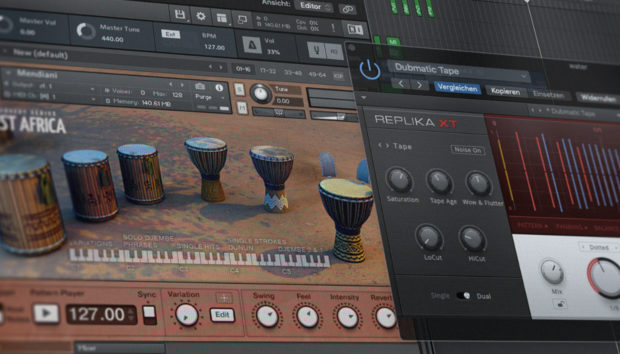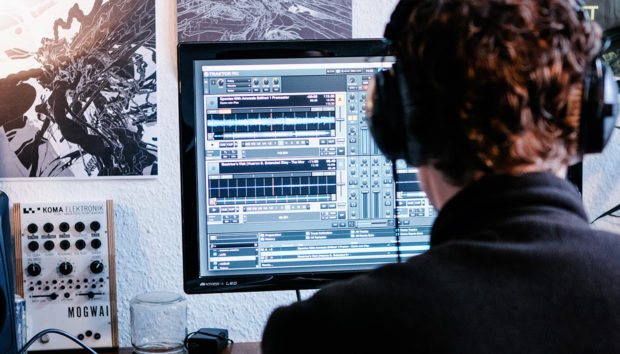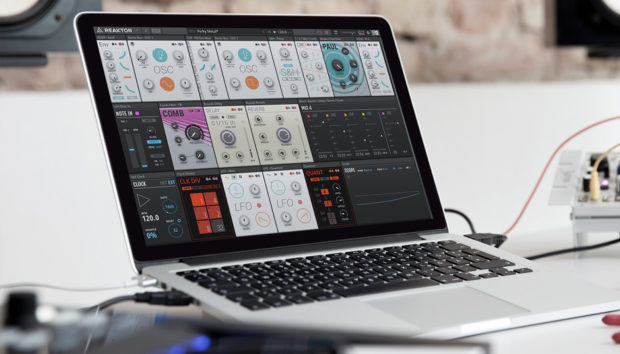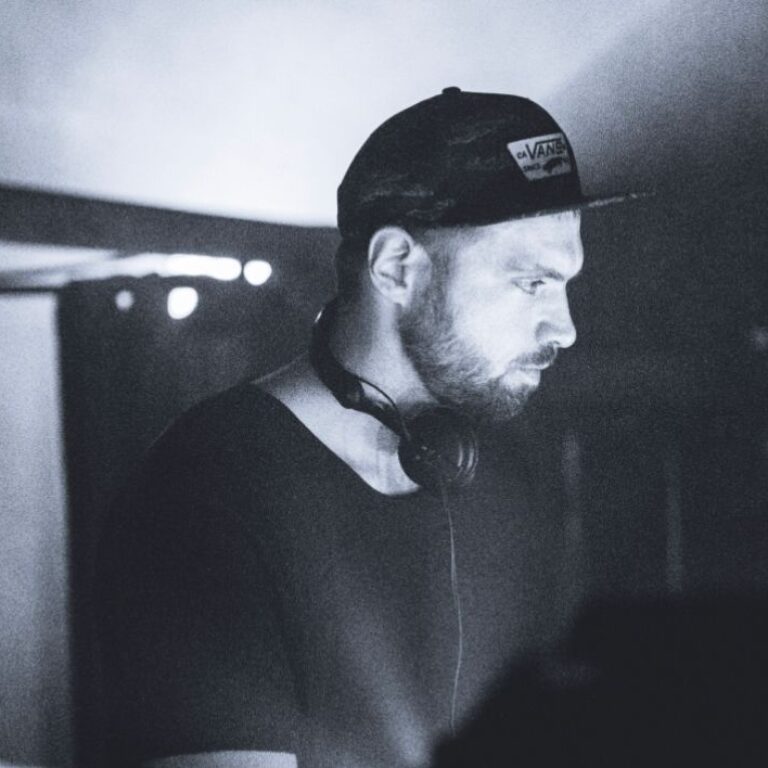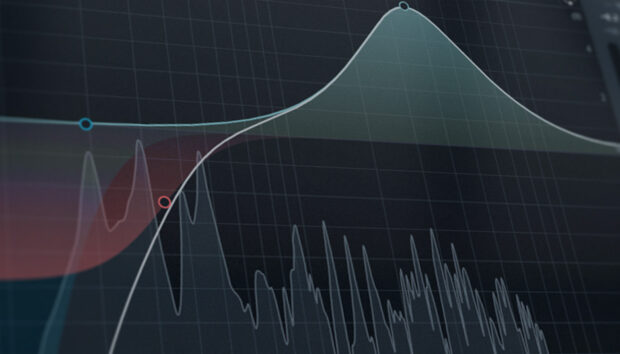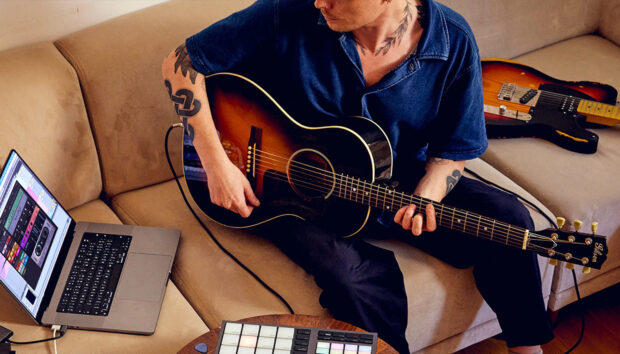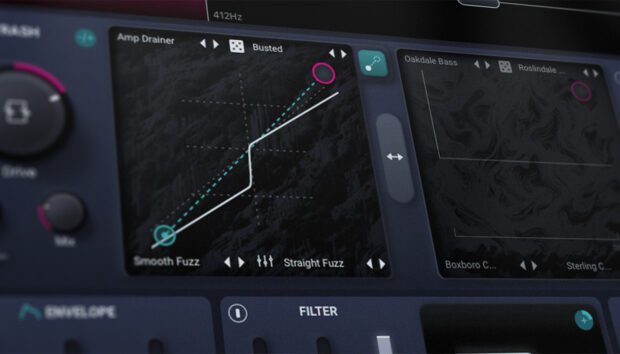Melodic techno depends on movement. The drums can’t feel static, but they also can’t pull too much attention from the melodic center. That balance is something Florian Kruse handles with precision in his production workflow – especially inside Battery 4.
His new EP Clockwork Mind / Mother Nature with Dilee D lands on Sasha’s Last Night on Earth, and the attention to groove is clear from the first few bars. The drums are punchy but controlled, leaving space for long builds and wide melodic phrasing. Behind that mix is a tight drum programming process built around curated kits, early separation of elements, and careful use of humanization and swing.
In this interview, Florian shares how he programs drums inside Battery 4, organizes his library for speed, and keeps the energy intact without overcomplicating the mix. Plus, get an exclusive Battery kit that Florian uses to craft his signature sound.
Download free Battery kit from Florian
Jump to these sections:
- Building kits in Battery from presets vs. custom samples
- Why separating kick, clap, and hat early helps the mix
- Using Battery’s swing and humanize tools to bring grooves to life
- How curated drum banks help streamline creative decisions
- Mixing mistakes producers make in melodic techno—and how to avoid them
- What Florian includes in his go-to drum chain for Battery 4 sessions
Keeping reading for practical advice from a producer who knows how to make drums hit the right way – without getting in the way and how to use Battery 4 for it all.
Do you build your kits from scratch in Battery, or do you load presets and swap elements as needed?
It varies. In my current workflow, there are really two scenarios.
One is to load my favorite samples into the battery and create my own kits. Over the years of producing music, I’ve built up an extensive collection of sample packs and made three of my own sample packs with many drum sounds that I still like to use, especially for kick drums, hats, and claps.
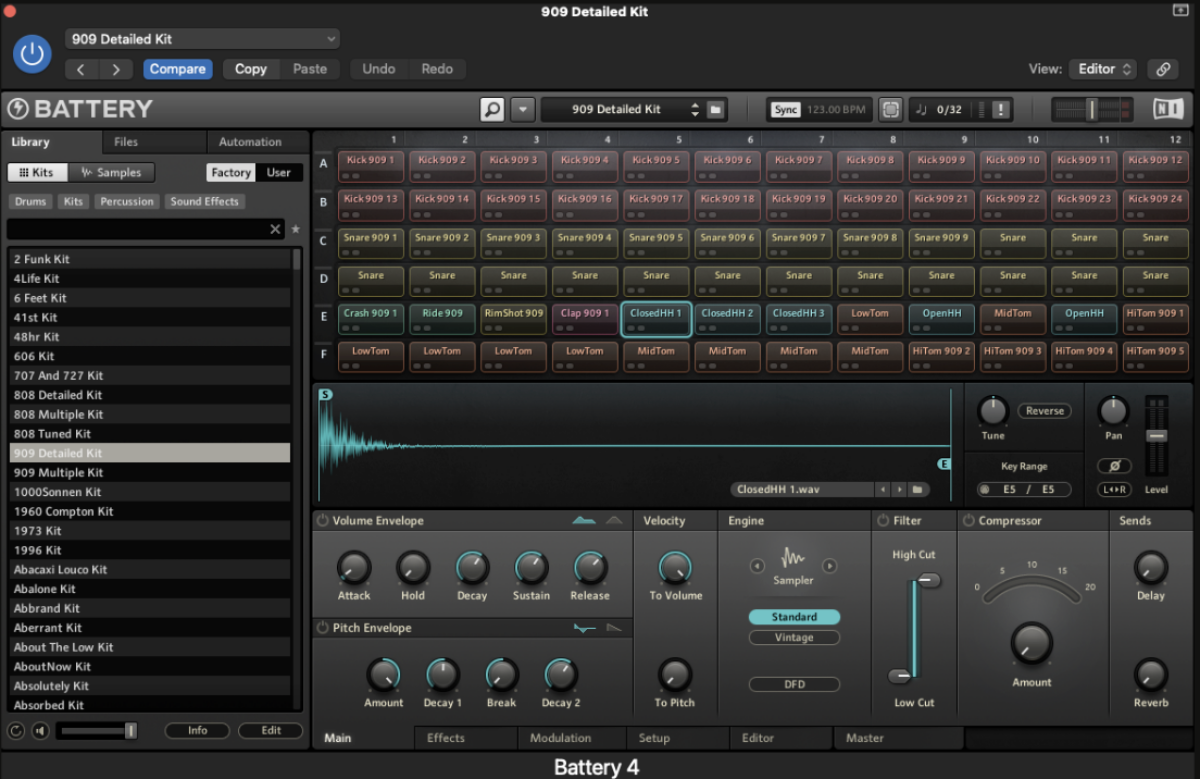
The other is to click through the kits in my library and get inspired by sounds I’ve never used before. I’m a fan of the Expansion kits and sometimes invest in new sounds, which always feels refreshing.
Are you separating kicks, claps, and hats into individual channels early or mixing inside Battery before breaking things out?
Yes, I separate kicks, claps, and hats because it’s essential for the arrangement and mixing process.
I prefer to do this work early and avoid getting messy.
This helps me focus on creativity. If I’m happy with the sound and pattern of a drum element, I’ll even bounce or export it as an audio file early on.
Melodic techno lives or dies by groove – how do you use Battery’s velocity, swing, or humanization tools to keep things from feeling static?
I use these features a lot. I have a good example from a new track I was working on recently. I was playing a clave sound with the MIDI keyboard, and it sounded way too static after quantizing. Humanizing and Battery’s swing function brought back the live feel. For elements like the kick drum, for example, I don’t want it to sound human.

A “four to the floor” kick needs to be quantized, and the velocity of each kick drum should be exactly the same.
I don’t use this feature on kick drums, but for percussion elements, it’s essential. These days, we’re used to quantizing all our MIDI notes. This makes our drums sound static, robotic, and less groovy. With “Humanize,” the sample varies in velocity and timing, and you can control the desired percentage.

Do you keep a curated sample bank inside Battery, or build from a large folder of external sounds every time?
I keep the curated sample banks in Battery and find browsing them inspiring. I usually find something suitable for my productions. As mentioned above, I also like to create my own kits. This saves a lot of time and can make a big difference on projects with tight deadlines, as I know all the sounds.
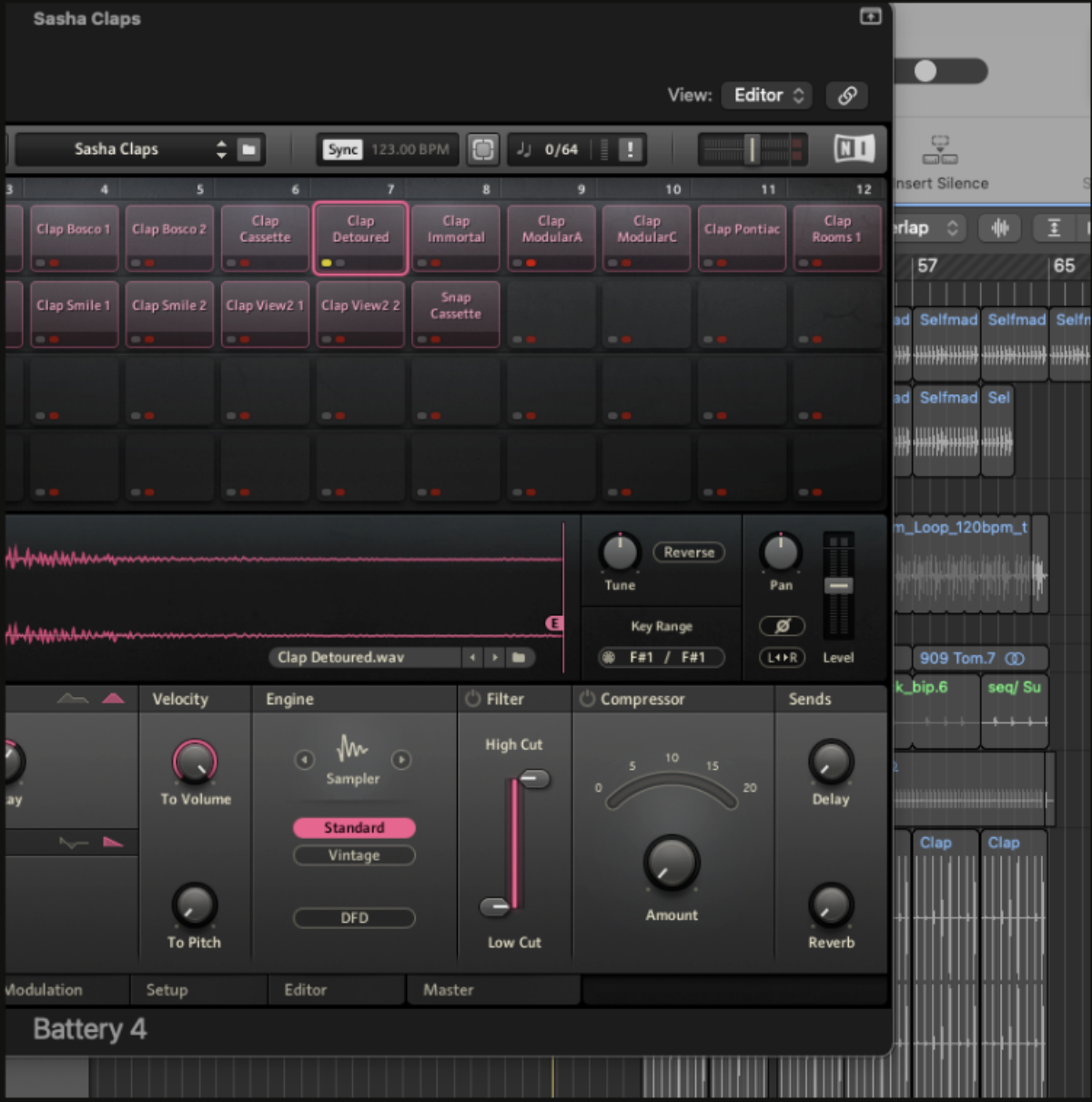
Create a folder and add your favorite kick drums.
You can also use older sessions and export the kick drums that have worked for you. Do the same with claps, hats, and snares so you’re well prepared when you start a new session and can be sure that your own signature drum sound is ready to go.
What’s one mistake you see producers make when mixing drums in melodic techno – and how would you fix it?
If I have to point out mixing problems when listening to melodic techno tracks, it’s usually overly compressed kick drums, claps, and overly colorful hi-hats.
I don’t like it when these three drum elements take too much center stage in a track. Of course, the mix needs to be powerful, which works in clubs, but remember that people are dancing to the hook and might even remember it a day later.

They probably won’t remember that cool kick and clap from the night before.
Pro tip from Florian Kruse: A little further into the production process, when working on transitions, the Reverse button in Battery 4 can help. I love paying attention to details in transitions in my arrangements, and I’ve often searched through my sample library for the right reverse sound. The Reverse button has proven to be an excellent solution for me to create my own reversed cymbal and effect sounds.
If you had to build one go-to Battery drum chain for melodic techno, what elements are absolutely essential?
Good question!
It requires a kick drum, clap, snare, closed and open hats, ride, toms, short white noise, shaker, tambourine, a handful of strange percussion effects, and a modern, cymbal-like crash effect sound (reverse and original).
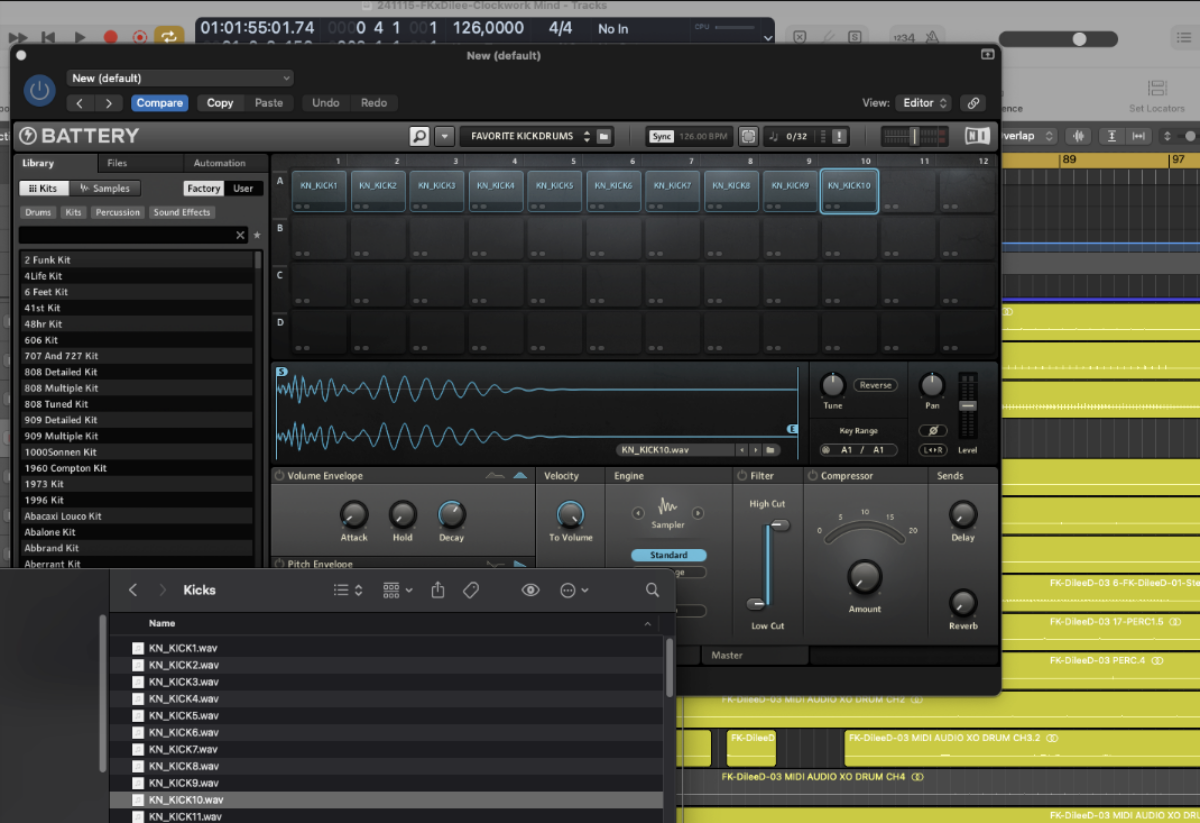
The classic drum sounds from the early days of house and techno are still the best. I love using the 909’s claps and hats and the snares to create those signature sixteenth-note snare rolls, for example. The 808 kick drum can be good too, and all of these classic sounds are available on Battery 4.
They might need some tweaking on the channel strip to get a richer sound, but it’s great to have them.
Wrapping it all up
Big thanks to Florian for breaking down how he works inside Battery 4. What stuck with us most was how dialed-in his process is without being overly complicated. It’s clear he’s spent years refining what actually works – separating key elements early, curating his own sample banks, using humanization where it matters—and now it’s just muscle memory.
You can hear all of it on Clockwork Mind / Mother Nature. The drums hit, but they stay out of the way. The groove moves, but nothing feels forced. It’s the kind of balance you only get when you trust your tools and don’t let the process slow you down.
For anyone building melodic techno, this is a solid reminder that tight drums don’t come from throwing more at the mix—they come from making clear decisions early and letting those small moves stack up.
